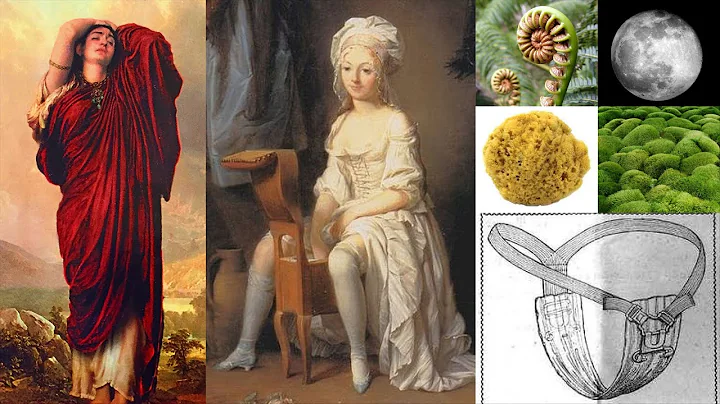As we all know, women will feel very uncomfortable for a few days every month, that is, they will have menstruation. Now they are jokingly called "big aunt", but in ancient times it was called menstruation. However, the ancients lacked scientific knowledge and often associated menstruation with strange powers and chaos, thinking that menstruation was a dirty and dirty thing.

For example, in ancient China, if a woman was menstruating during a wedding, it would be considered very unlucky, so when choosing a wedding day, you must avoid menstruation.
Li Shizhen said in "Compendium of Materia Medica": " Women's evil fluids are fishy and filthy at night, so a gentleman should stay away from them, because they are unclean and can damage Yang and make them sick. " In other words, men should stay away. Women who menstruate will fall ill otherwise, and even this great pharmacist is not exempt from this.
During menstruation, women not only have to sleep in separate rooms with their husbands, but also cannot go to religious places, otherwise they will be considered to offend the gods.

In ancient Western countries, it was even worse. The ancient Roman Pliny said in " Natural History " that women's menstruation not only makes steel rust, but also prevents seeds from germinating and crops wither. It sounds very scary.
Now we have sanitary napkins, which solves the little fairies’ trouble of attending appointments on time every month. However, in ancient times with backward technology, how would a woman deal with the arrival of her aunt?
In the barbaric era of mankind, it would be good to wrap yourself in some animal skins or leaves to keep out the cold, and this issue would not be considered at all. If it does, just wipe it with soft leaves or weeds and that's it.

Menstrual Cloth during the Republic of China
With the progress of society, after humans mastered textile technology and had fabrics, people thought of one thing: plant ash.
Plant ash has strong adsorption capacity, has bactericidal effect, and is very convenient to obtain, so it has been used in menstrual cloth for a long time.
Girls put plant ash into cloth strips and tied them around their waists. People call them menstrual cloths. This is the most primitive sanitary napkin. When you need to change it, just replace the plant ash on the menstrual cloth.

Menstrual cloth during the Republic of China
Menstrual cloth is also called menstrual belt or "riding cloth". It is usually about 10 cm wide and has a slender rope on both sides. Women with ingenuity will also embroider it beautifully. Beautiful.
Because menstrual cloths can be stained with blood, people often use darker colors such as blue and black.
Of course, you may say that although plant ash has strong adsorption capacity, it is not light enough and makes it difficult to move around when hanging on the body. Therefore, rich people will use cotton instead of plant ash.
Later, with the invention of paper, people found that straw paper had good adsorption capacity and was light in weight, so straw paper replaced plant ash in menstrual cloths.

It was not until the 1880s that sanitary napkins in the modern sense appeared.
American nurses put medicinal cotton inside the sanitary napkin, and then fixed it with a bandage so that it would not stain the cotton and prevent side leakage. This was the predecessor of modern sanitary napkins.
Since then, various brands of sanitary napkins have emerged on the market, and a wide range of sanitary napkins have appeared in stores.
In 1929, an American doctor named Haas invented the internal tampon. In the 1970s, self-adhesive sanitary napkins appeared again.
Nowadays, people have improved the materials of sanitary napkins, making them safer and more comfortable, and they are also very convenient to carry. However, in China, sanitary napkins did not become popular until the 1980s.

It should be said that sanitary napkins are a very great invention!
From the evolution history of sanitary napkins, we can see that the materials are constantly improving, from rough to refined, protecting the health of countless women, which reflects the continuous improvement of women's status.





















